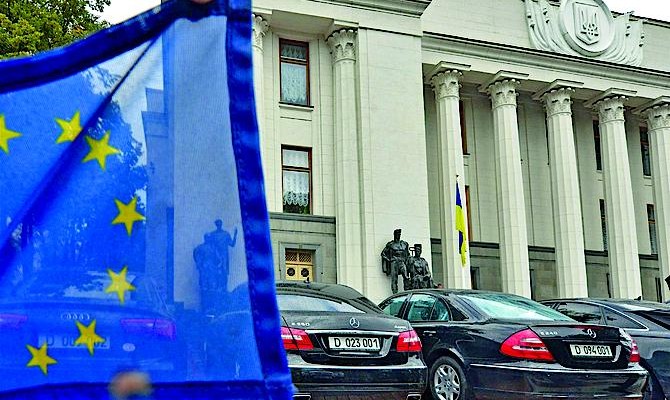Politics
friendshipUkraine is ignoring successful experience of Croatia and Poland in European integration

The Association Agreement between Ukraine and the EU (AA) shall enter into force on November 1. Despite the postponement of the terms of implementation of the economic part of the document, Kyiv and Brussels are not going to make adjustments to the plan for implementation of the remaining provisions of the agreement. But the process of implementation of the plan is complicated by the absence of a united decision-making center regarding the European integration in Ukraine.
Change of name
Ukraine and the EU do not intend to make changes in the schedule of the plan of implementation of provisions of the Association Agreements, despite the postponement of commencement of the economic part of the document to 2016, according to Deputy Minister of Defense for European Integration Ihor Kabanenko. He added that the government commissioned Cabinet members responsible for European integration to prepare a “roadmap” by November 1, so that it could move to real steps for implementation of the agreement starting next month under the supervision of representatives of the EU.
The implementation plan was approved by the government back on September 17. The document of more than 400 pages envisages specific actions for the implementation of the AA by 2017. It is expected that implementation of the provisions of the agreement by the EU and Ukraine will be supervised by a joint structure – namely, a bilateral commission. Ukraine will be represented by deputy ministers for European integration. The Association Council will be its supreme body consisting of representatives of the EU Council and the European Commission, on the one hand, and Ukrainian ministers headed by the premier, on the other.
Former Foreign Affairs Minister Volodymyr Ohryzko said in a conversation with Capital that these bodies should begin work after the Association Agreement takes effect on November 1. “According to my information, there is an agreement on meetings of bilateral bodies in November. They will outline the program for their work then,” said Ohryzko.
Kabanenko said that today there were two structures responsible for implementation of the Association Agreement in Ukraine. Namely, the government Committee for the Coordination of European Integration meets on Fridays. It includes deputy ministers responsible for cooperation with the EU. “At these meetings, we determine implementation tasks and choose the paths of their solution. I, as well as other deputy ministers responsible for European Integration, work in my field in conjunction with a group of European colleagues. This is necessary, because the plan for implementation of the Association Agreement is quite a massive, detailed document requiring coordinated operation,” said Kabanenko.
In the European vertical the government committee serves as an advisory body. According to the Cabinet’s plan, the government office coordinating the work of executive authorities in this direction will be the driving force for European integration.
Office Director Natalya Hnydyuk did not disclose the details of the structure’s work. She said that the office was created on the basis of the Association and Integration Affairs Department. The department was approved by the previous Cabinet in 2012. And even though earlier Cabinet Minister Ostap Semerak said the office would be a new structure to which individuals would be hired based on the results of competition, Capital’s source in the government assures that they simply renamed the old department.
Vague responsibility
A member of the Ukrainian delegation at the talks with the EU in 2007 – 2010 Vadym Tryukhan says the government office still operates as a department, which reduces its effectiveness. “The presence of multiple decision-making centers in the field of European integration complicates the process of restructuring of the country according to the European model. Croatia and Romania, which also integrated into the EU through association agreements, created single Ministries of European Integration, which were headed by ministers with the powers deputy prime ministers. The ministry has more powers and rights to present laws and regulations for consideration of the Cabinet. This makes it a powerful lobbying force,” argues Tryukhan.
Director of the Foreign Policy Institute Hryhoriy Perepelytsya also believes that Ukraine needs a single body for supervision and control over the European integration process. “The Ministry of European Integration option would be preferable. The experience of Poland is a clear testimony to this. Such ministry could become a body of strategic planning engaged not only in implementation of the Association Agreement, but also the prospects of Ukraine’s full membership in the EU,” he said in a conversation with Capital.
As a reminder, earlier President Petro Poroshenko predicted that Ukraine will be able to apply for EU membership in 2020.






 of the agreement of syndication with Financial Times Limited are strictly prohibited. Use of materials which refers to France-Presse, Reuters, Interfax-Ukraine, Ukrainian News, UNIAN agencies is strictly prohibited. Materials marked
of the agreement of syndication with Financial Times Limited are strictly prohibited. Use of materials which refers to France-Presse, Reuters, Interfax-Ukraine, Ukrainian News, UNIAN agencies is strictly prohibited. Materials marked  are published as advertisements.
are published as advertisements.